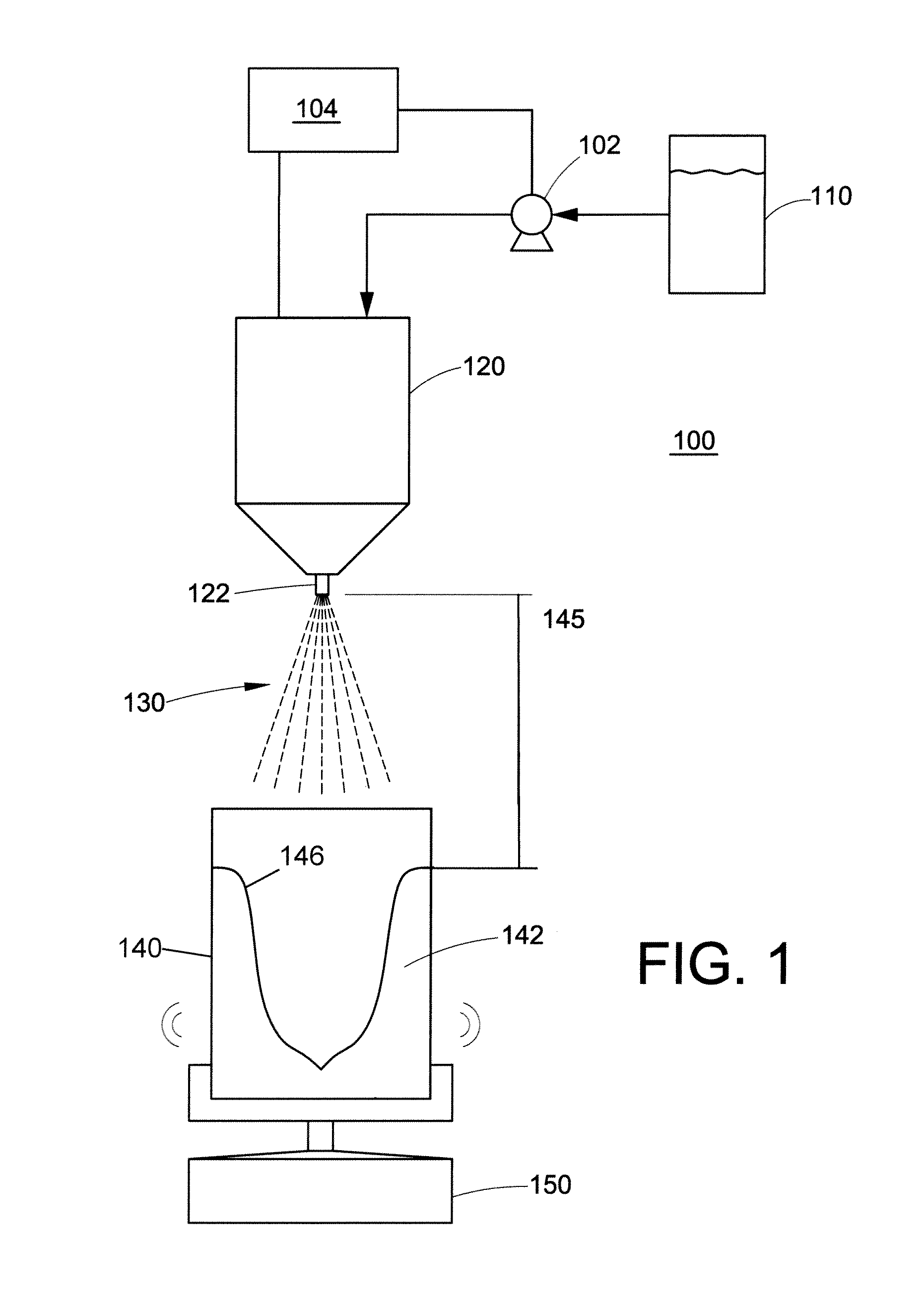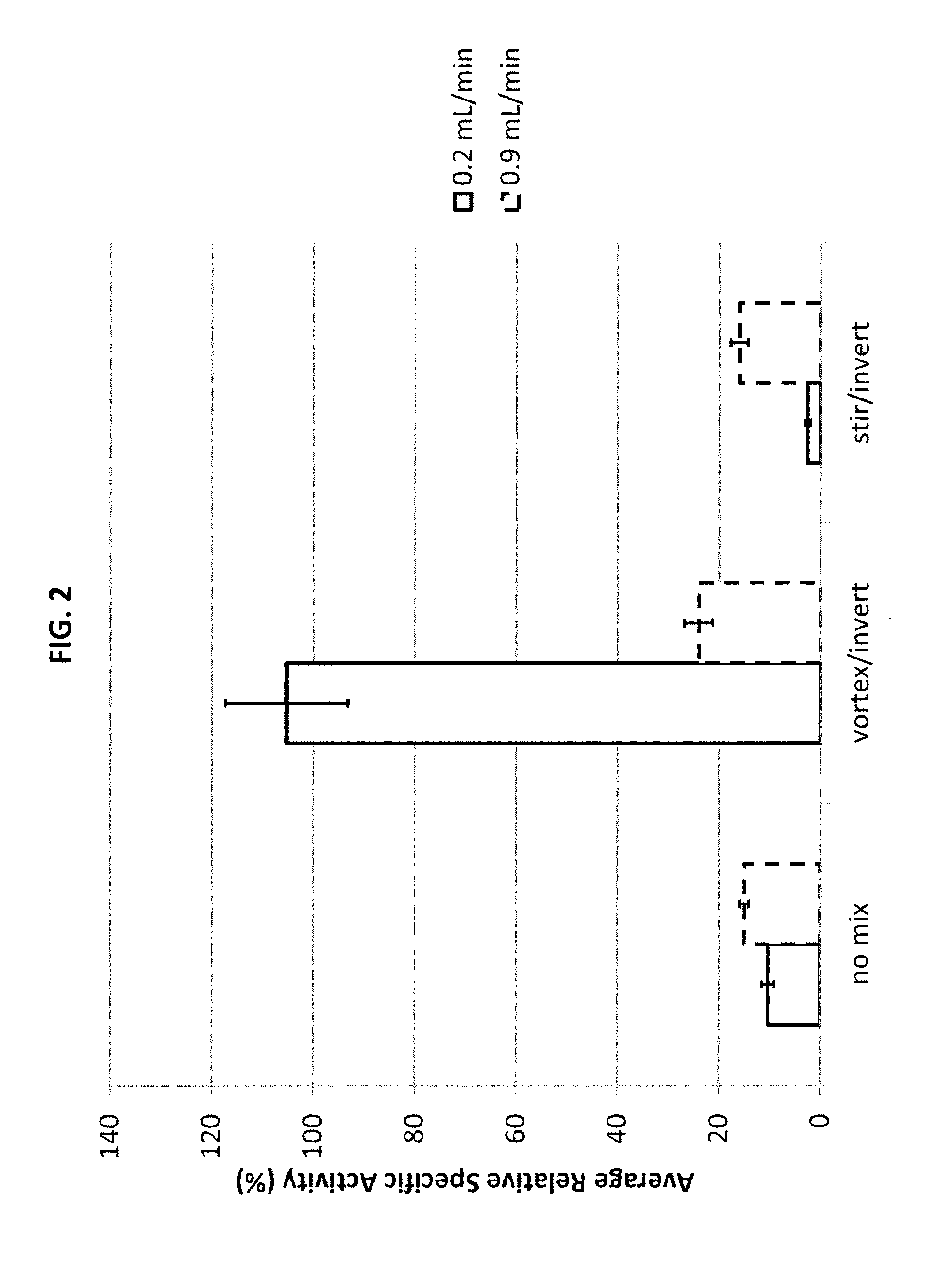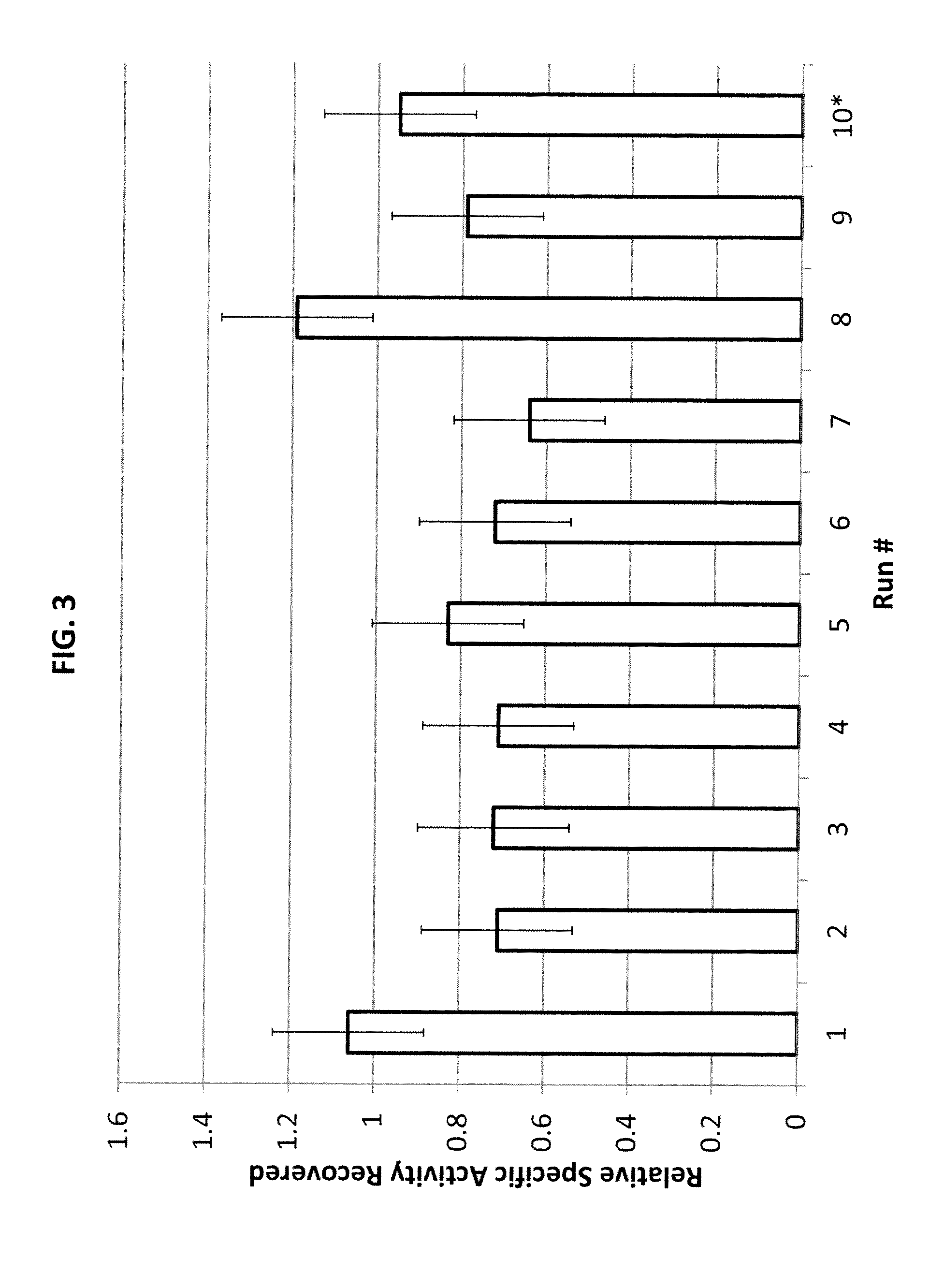Processes For Producing Protein Microparticles
- Summary
- Abstract
- Description
- Claims
- Application Information
AI Technical Summary
Benefits of technology
Problems solved by technology
Method used
Image
Examples
example 1
[0063]The model enzyme glucose oxidase (GOx) was used to evaluate the potential to form biologically-active, protein-rich spheroid microparticles by ultrasonic spray delivery into a lower density, dehydrating solvent at room temperature. Three sets of different processing conditions are shown in FIG. 2. For each set of conditions, the GOx solution was sprayed at a flow rate of 0.2 mL / min or 0.9 mL / min. Average specific activity values were calculated as a percentage of specific activity recovered from an aliquot of the original GOx solution that was not subjected to atomization. GOx specific activity was determined by colorimetric detection of hydrogen peroxide in the presence of glucose normalized to the total protein concentration in the sample as determined by the bicinchoninic acid (BCA) method.
[0064]Atomization of a buffered GOx solution at a flow rate of 0.2 mL / min and 2.5 W input power using a 60 kHz commercial ultrasonic spray nozzle (Sono-tek) directly into n-decanol (not a...
PUM
| Property | Measurement | Unit |
|---|---|---|
| Temperature | aaaaa | aaaaa |
| Fraction | aaaaa | aaaaa |
| Fraction | aaaaa | aaaaa |
Abstract
Description
Claims
Application Information
 Login to view more
Login to view more - R&D Engineer
- R&D Manager
- IP Professional
- Industry Leading Data Capabilities
- Powerful AI technology
- Patent DNA Extraction
Browse by: Latest US Patents, China's latest patents, Technical Efficacy Thesaurus, Application Domain, Technology Topic.
© 2024 PatSnap. All rights reserved.Legal|Privacy policy|Modern Slavery Act Transparency Statement|Sitemap



